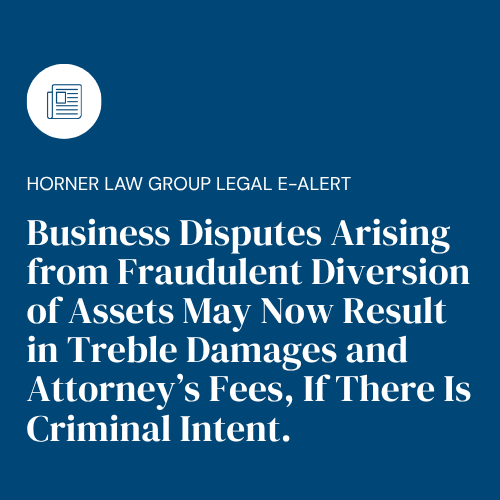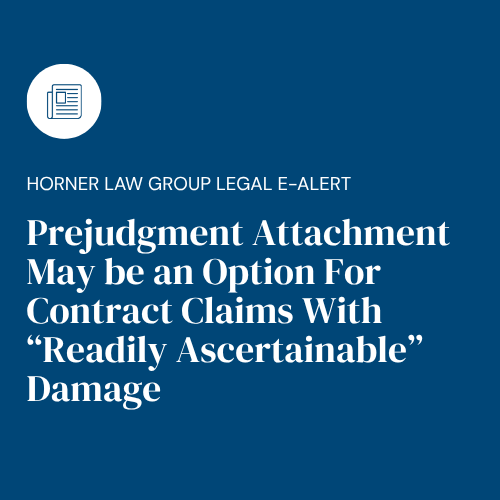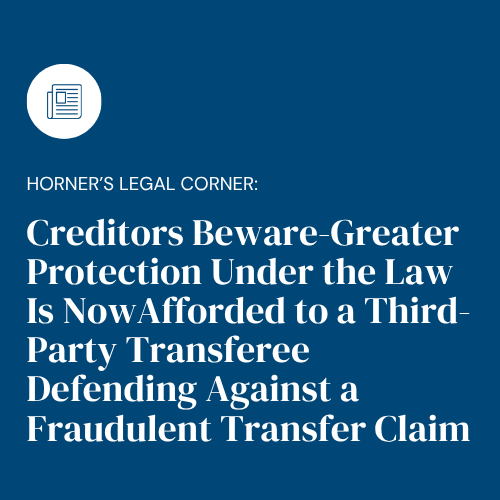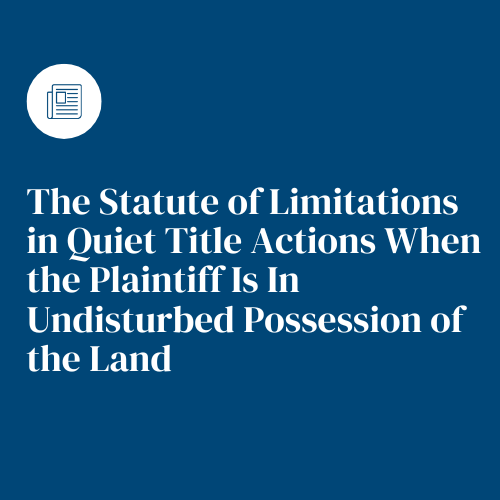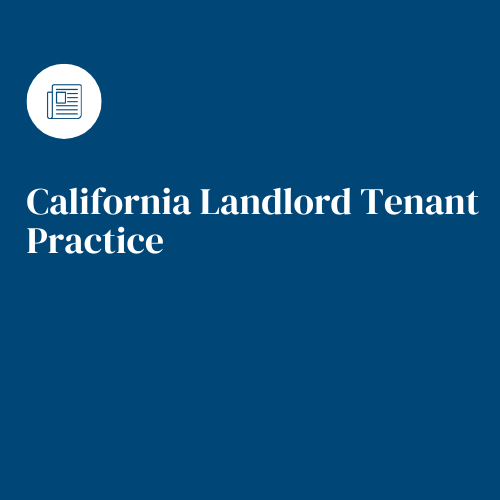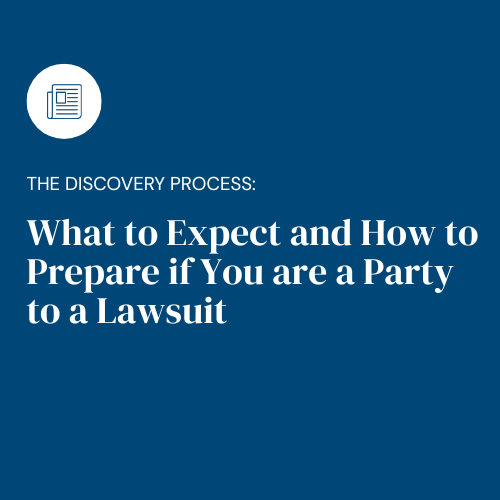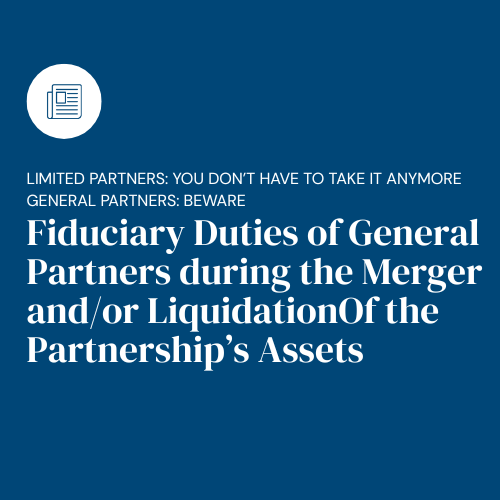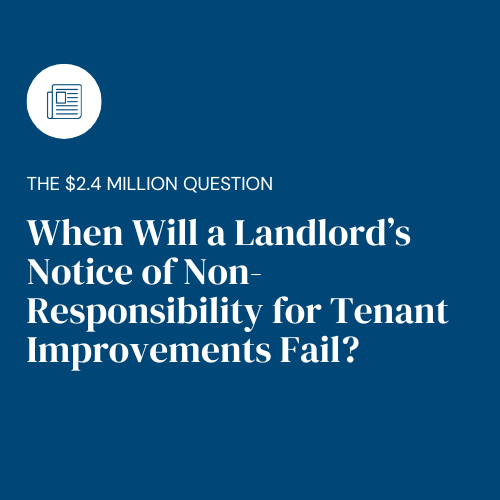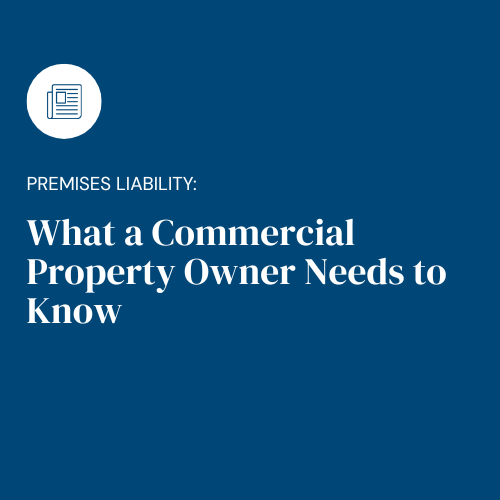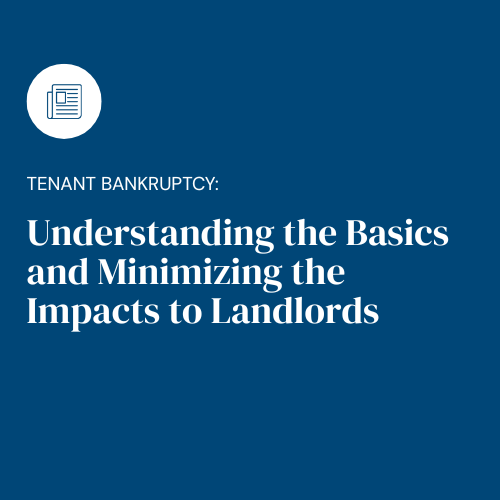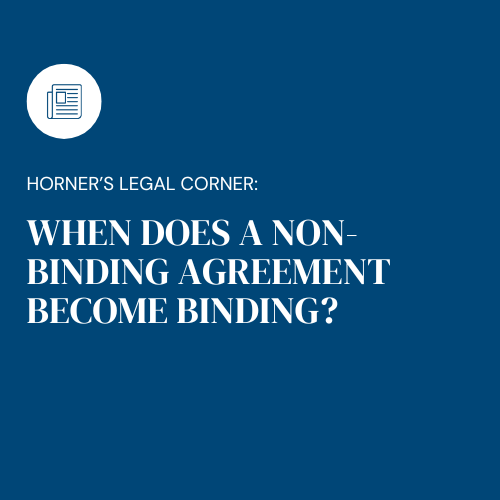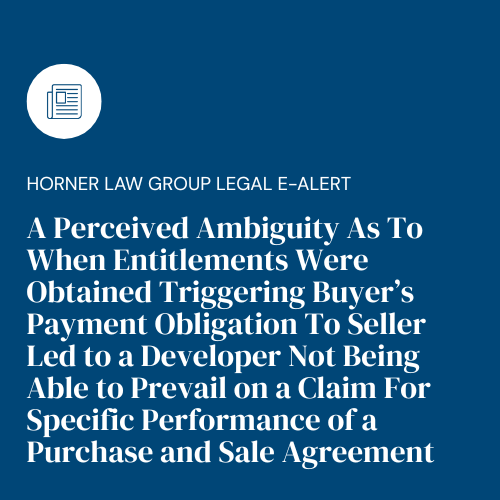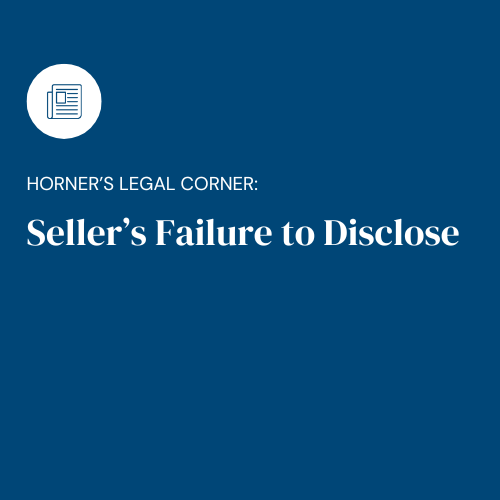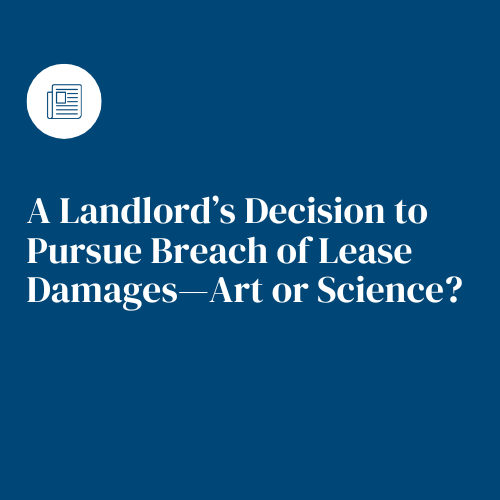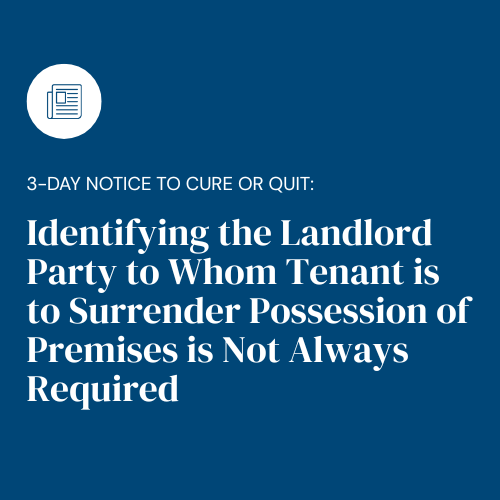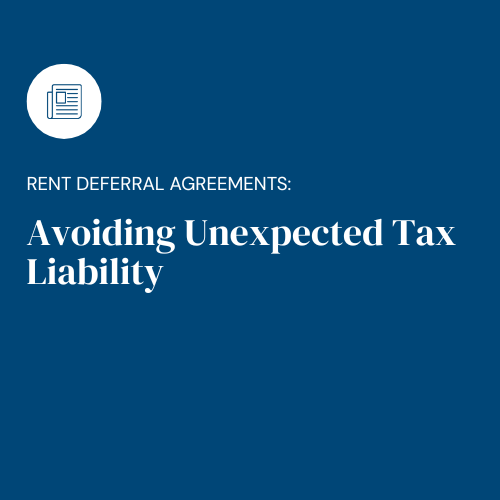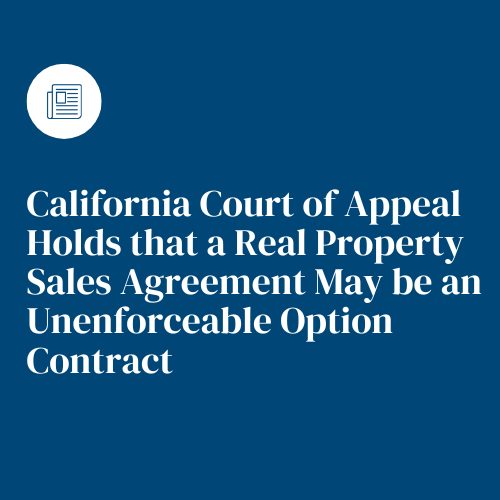A Landlord's Decision to Pursue Breach of Lease Damages—Art or Science?
CONTACT
Cliff Horner
by Scott W. Singer & Clifford R. Horner
As all BOMA members already know, tenant defaults over the past three years have increased significantly. The owner’s regaining possession of the Premises following a monetary default is typically not expensive or time consuming. The expedient is statutory unlawful detainer procedure can usually be completed in 30 to 60 days, and without significant expense. The challenging question facing office landlords is: after obtaining possession, does it make financial sense to pursue litigation against the tenant for breach of lease damages? So all another way, is it in the best interest of the owner/landlord to file a breach of lease lawsuit and incur further attorneys’ fees pursuing an evicted tenant for monetary damages?
A breach of lease action is typically brought after a landlord has regained possession of the premises through an unlawful detainer action, voluntary return of possession, or notice of belief of abandonment. As discussed below, if the landlord has obtained a judgment as part of regaining possession, the landlord and counsel have valuable tools to investigate the assets of a tenant and/or guarantor to assist in determining whether a breach of lease action makes financial sense. If possession was obtained without an unlawful detainer judgment, as a result of various state and federal legislation restricting consumer information publically available, the owner/landlord is limited to the financial information it obtained as part of the lease negotiation and execution process and the information available through public records – a sparser universe of available information. In those instances, the art of balancing the factors discussed below is as close to a scientific approach as a landlord may be able to make in deciding whether to pursue litigation for lost rent against the tenant. We will examine both scenarios and the factors a landlord should consider in this article.
Unlawful Detainer Judgment
One of the most valuable methods to determine whether to pursue a tenant for future rent damages is to initially pursue an unlawful detainer judgment. If the return of possession occurred through a court judgment, the landlord has in its possession a judgment for the then delinquent rent, which is a valuable tool to the landlord in determining whether to proceed with additional litigation to attempt to recover future rent. In cases where the sufficiency of a tenant or guarantor’s assets are questionable (which is the vast majority of cases), it is recommended to attempt to collect on the unlawful detainer judgment before making the decision to litigate the future rent claims in a breach of lease action. There are two primary steps to take in collecting on an unlawful detainer judgment. First, the landlord should level all bank accounts of the tenant. Bank levies are inexpensive (approximately $200 per bank account), typically only take two to three weeks to complete, and are very effective. In addition to levies, it is recommended that an examination under oath be immediately scheduled and taken. This allows questioning regarding the tenant or guarantor’s financial condition and ability to pay the Judgment. After concluding the bank levies and examination under oath, a landlord should be in a position to make an educated decision whether to expend the attorneys’ fees to pursue a breach of lease judgment or whether the tenant is essentially judgment proof.
If the Landlord Does Not Have an Unlawful Detainer Judgment
If the landlord obtained possession in a manner that did not result in a judgment (i.e. via a notice of belief of abandonment or voluntary return of possession), then the valuable tools of bank levies and examinations under oath after judgment are not available. In this instance, the landlord should examine and balance the factors below in order to make a more informed decision whether to pursue a breach of lease action.
Factors to Consider in Determining if a Landlord Should Pursue Breach of Lease Damages
1. Corporate versus personal tenant. In the event the subject tenant has formed a corporation and the corporation is a “mom and pop” single-location operation, this strongly weighs against filing a breach of lease action. These sorts of corporations are typically shells with no assets.
2. Tenant’s Assets. One of the primary considerations in pursuing any tenant is whether the tenant (whether individual or corporate) has assets sufficient to satisfy all or any part of a potential judgment. This same analysis applies to any guarantor. The goal of the landlord and its attorney in deciding whether to pursue a tenant or guarantor is to determine what assets may be available to satisfy any potential judgment. Unfortunately, in California very little information is readily obtainable other than real estate ownership information. Lease language may allow the landlord to obtain financials on the tenant’s own and to credit report – both of which may be valuable in determining a tenant’s assets.
3. Tenant’s Retention of Legal Counsel. As a general rule, if a tenant has the financial ability and does in fact retain legal counsel, that is a sign that the tenant may have assets worth protecting.
4. The Amount in Dispute. Regardless of what financial information may be available about a tenant or guarantor, the greater the amount in controversy, the more likely a landlord should file a breach of lease or breach of guaranty action. The filing of the complaint by itself is a relatively inexpensive investment to see how the tenant or guarantor reacts.
5. Other Locations/Businesses. A landlord may have knowledge of other locations or other businesses run by the tenant. If a tenant has other locations, the chance of recovery increases.
6. Other Information. This factor can be called the “scuttlebutt.” It is not uncommon to find out from the property manager that the tenant abandoned the subject premises, but moved across the street, took all the clients from the former business, and is operating the same business under a new name. This information can prove valuable to the owner in determining if there is a potential to pierce the corporate veil and create personal liability on the part of the principals of the tenant’s business. A tenant may tell his office neighbor or the office manager about the house she has in Tahoe, or the luxury home they have under construction.
Right to Attach Orders
In California, landlords (and other creditors) can file concurrently with the breach of lease complaint an application for a right to attach order, which provides the landlord the power to locate and levy any non-exempt assets of the tenant or guarantor, effectively “freezing” those assets. The cost of an application for right to attach order is relatively nominal (attorneys fees typically range from $3,000 to $6,000), and the settlement leverage created by attaching the tenant’s assets is significant.
Conclusion
An owner/landlord’s strategy in determining whether to file a breach of lease action to recover all of the owner’s lease damages involves a balancing of all factors known by the asset manager, property manager and counsel. If all known information is added to the conversation, this compilation of information should lead to an increased chance of recovery and less wasted attorneys’ fees.
Subscribe to Horner Law Group Mailing Lists
Get the latest significant legal alerts, news, webinars, and insights that affect your industry.

